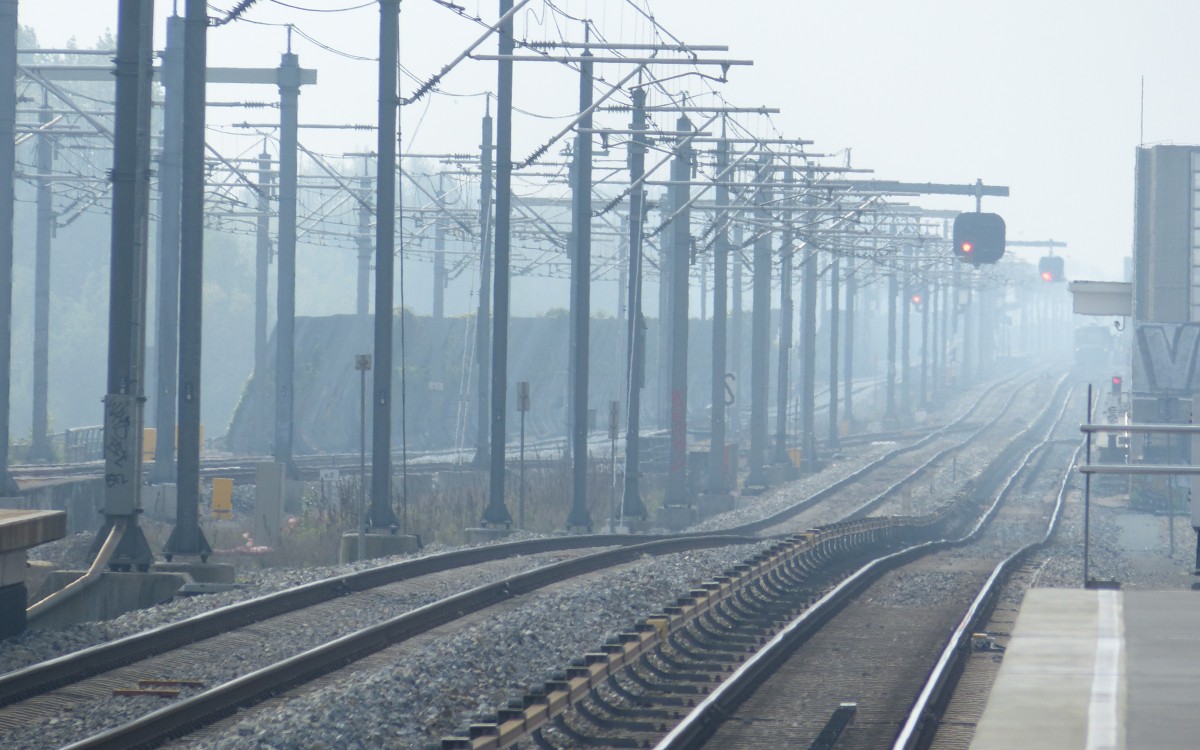Climate change impacts on financial investment portfolios and on railway infrastructure

Expected likelihood of increase of flood and prolonged periods of drought presents a unique challenge to financial institutions and railway sector in the Netherlands, representing both physical and economic risks.
Status report, October 2021
Case content
Climate change presents two primary sources of risks to financial investors: physical climate risks that expose assets to the consequences of climate change and climate transition risks related to the impacts of changes in policies and regulations to reduce greenhouse gas emissions. Until now, most studies have focused on transition climate risk. There are, however, increasing concerns about physical climate risk on businesses, particularly equity, debt, and real estate assets in investors’ portfolios. Despite the potential value of Physical Climate Risk assessment (PCRA) in estimating climate threats and generating actionable information to address the threats, little attention is given to it in the financial sector. Several issues limit organisations’ ability to conduct PCRAs. Key among these issues is the inadequate stakeholder consultation during the planning and implementation of PCRAs, resulting in mistrust of risk information and limited use for decision-making. Also, the lack of transparent scientific validation of often black-box approaches raises concern for science and practice. Furthermore, investors find it difficult to use climate model (global and regional scale) results to estimate the actual risks of their assets at different spatial and temporal scales. Moreover, simply selecting a climate risk assessment method or approach does not guarantee effective decision making in adaptation planning. The information and processes required to operationalise the PCRA methods are context specific, depending on the objective of the adaptation decision, its context and the nature of the problem. This case study addressed the above issues by adopting the Impact Chain model and testing critical innovations proposed by UNCHAIN in four real estate cases, thereby contributing to the improvement of physical climate risks assessment in the financial sector.
Research Innovations
The core of case study 8a is knowledge co-production. Other innovations such as societal transformation, addressing uncertainties, knowledge co-production and Socio-economic scenarios and societal exposure to climate change were implemented at different degrees. The case study improves understanding of how real estate are impacted by climate risk. The real estate cases include individual assets (the Hotel at Wilhelminakade and The Wall shopping centre) and portfolios asset.
Study areas
Rotterdam and Utrecht in the Netherlands
Stakeholders involved
MVGM; Vesteda and Syntrus Achmea Real Estate & Finance
Summary data collection
1. Qualitative data were collected from stakeholders through interviews, phone conversations and workshops. 2. Quantitative data were collected from the Dutch Climate Impact Atlas and KNMI. 3. Data was also collected from peer review articles, project reports and documents.
Results
The study shows the IC model and the introduced innovations helped conduct climate risk assessment for the financial sector in several ways; first, it generates actionable climate risk information approved by stakeholders and supports investors in pinpointing which assets need attention and how much money is required to mitigate the impacts. Second, the risk assessment conducted in this study served as a template upon which real estate managers and clients make selling and purchasing decisions, respectively. Third, risk assessment could influence adaptation decision by serving as a tool for determining the choice of building materials and the structure of properties. Furthermore, using the IC model and the innovations allowed the identification of five cardinal points (that incorporate the perspectives of both providers and end-users) to improve the PCRA process: These points are framed around 1) Engagement and co-production, 2) Needs identification, 3) Data availability and quality, 4) Internal integration, and 5) Communication.
Case study responsible
Wageningen University and Research - Netherlands & Climate Adaptation Services- Netherlands
Contact
